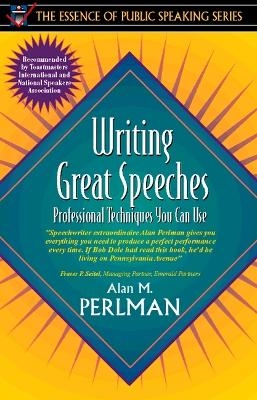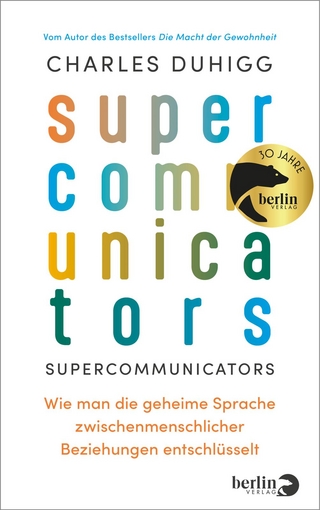
Writing Great Speeches
Pearson (Verlag)
978-0-205-27300-3 (ISBN)
Authored by an academically trained linguist and former university professor who is also a highly successful and experienced professional speechwriter, this volume shows students the author's personal methods for reaching an audience and achieving the desired result or purpose. From the beginning stages of deciding what to say to applying the finishing touches to the script, Perlman's clear and eloquent voice leads readers through the various stages of writing and delivering an effective speech. His original professional techniques for acquiring "quick credibility" and writing a "listenable" speech round out his highly effective strategies for creating successful speeches.
1.Deciding What to Say.
Purpose Controls Content.
Purpose: No Secrets.
How to Focus on Purpose.
From Purpose to Content.
Audience Controls Content.
Bottom Line: Purpose, Audience, Content.
2.Sequence: Putting Things in Order.
Background: An Interesting Paradox.
How to Organize: Seven Patterns.
How to Outline.
Sequence: The Speech as Story.
How to Signal Your Organizational Plan to Your Audience.
3.Beginning and Ending Your Speech.
How to Begin: The First Words Out of Your Mouth.
First Words: Behavioral Boners.
How to Begin: Fifteen Strategies.
How to End: Six Strategies.
Powerful Endings: The Last Words Out of Your Mouth.
4.Economy — Tips for Controlling Length.
Timing Your Speech.
Paths to Economy.
Review: Purpose/ Audience/ Content Questions.
When You Have to Cut it Down Even More.
5.Quick Credibility: Learning What You Need to Know.
Elements of Quick Credibility.
Definitional Perspective: What It Is.
Critical Perspective: What's Important.
Creativity on Cue: Generating Ideas.
Postscript: The Effective Use of Quotes.
Appendix: Aids to Quick Credibility: Sources of Facts, Quotes and Other Useful Material.
6.Ceremonial Speeches.
Why Ceremonial Speeches are Different.
The Challenge.
Introductions.
How to Organize the Introduction.
Dedications.
Award Acceptances.
The Golden Rule of Ceremonial Speechwriting.
7.Listenability.
What Makes a Speech “Listenable?”
Editing for Clarity.
Editing for Closure.
Editing for Coherence.
You've Got Rhythm.
8.Style: Dressing for the Occasion.
The Importance of Style.
Personal vs. Impersonal Style.
Personal or Impersonal? How to Choose Your Style.
Postscript on Style: Creating an “Implied Dialogue.”
9.Word Choice: Finding the Lighting.
Editing for Word Choice.
What Do Words Do?
Word-Choice Function #1: Labeling.
Word-Choice Function #2: Judging.
Word-Choice Function #3: Distancing.
The Right Word: Summary, What it Means to "Use a Word Correctly."
Word-Choice Challenge #1: Language Variability and Change.
Word-Choice Challenge #2: Gender and Other Sensitivities.
Word-Choice Challenge #3: Balancing Originality and Familiarity.
10.Delivering the Message.
Selecting Your Support Strategy.
Speechmaking as Acting.
Key to Effective Delivery: Modeling.
How to Deliver a Script with Impact.
Rehearsal and Evaluation.
Final Preparations.
11.Bringing It All Together: Practicing What I Preach.
Summary: How to Make Your Speeches Cogent and Memorable.
Epilogue: A Few Last Words: Speechmaking As Behavior - and Why the Principles of Good Speechwriting Are What They Are.
| Erscheint lt. Verlag | 28.10.1997 |
|---|---|
| Sprache | englisch |
| Maße | 140 x 214 mm |
| Gewicht | 310 g |
| Themenwelt | Sachbuch/Ratgeber ► Beruf / Finanzen / Recht / Wirtschaft ► Briefe / Präsentation / Rhetorik |
| Geisteswissenschaften ► Sprach- / Literaturwissenschaft ► Literaturwissenschaft | |
| Wirtschaft ► Betriebswirtschaft / Management | |
| ISBN-10 | 0-205-27300-9 / 0205273009 |
| ISBN-13 | 978-0-205-27300-3 / 9780205273003 |
| Zustand | Neuware |
| Haben Sie eine Frage zum Produkt? |
aus dem Bereich


